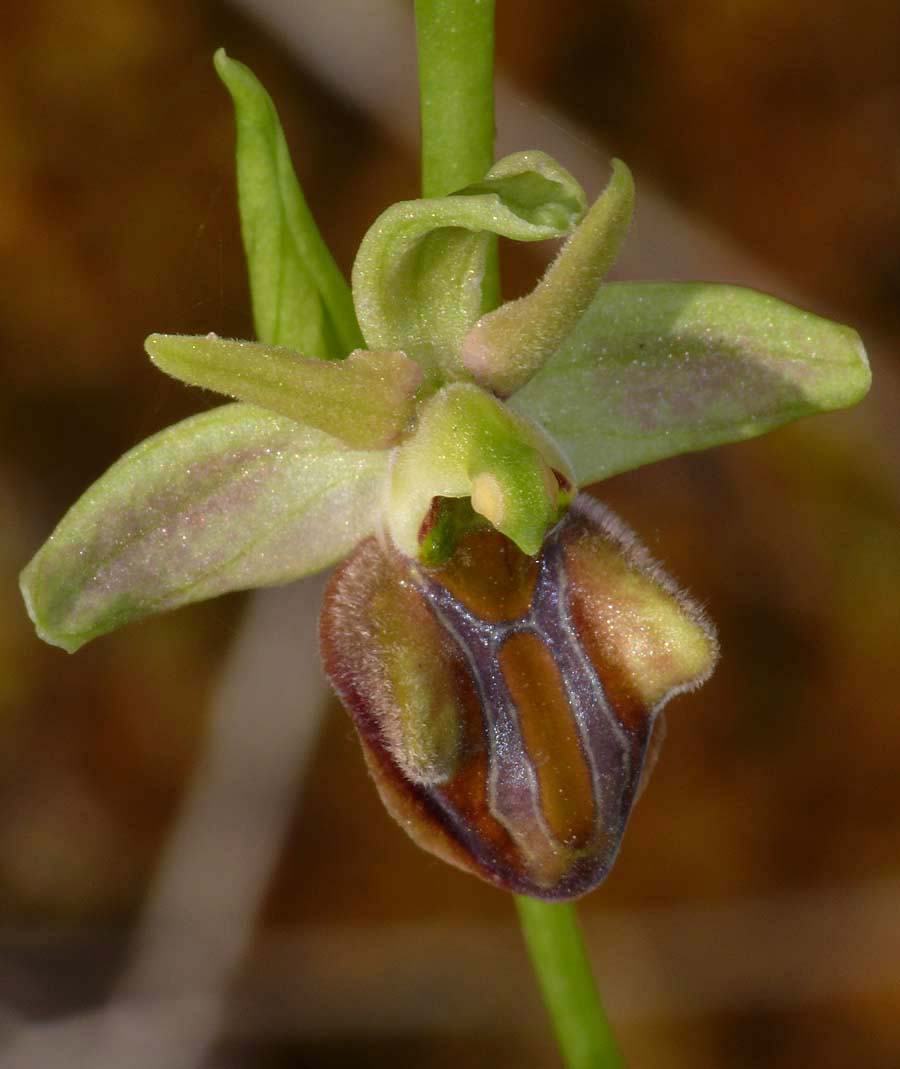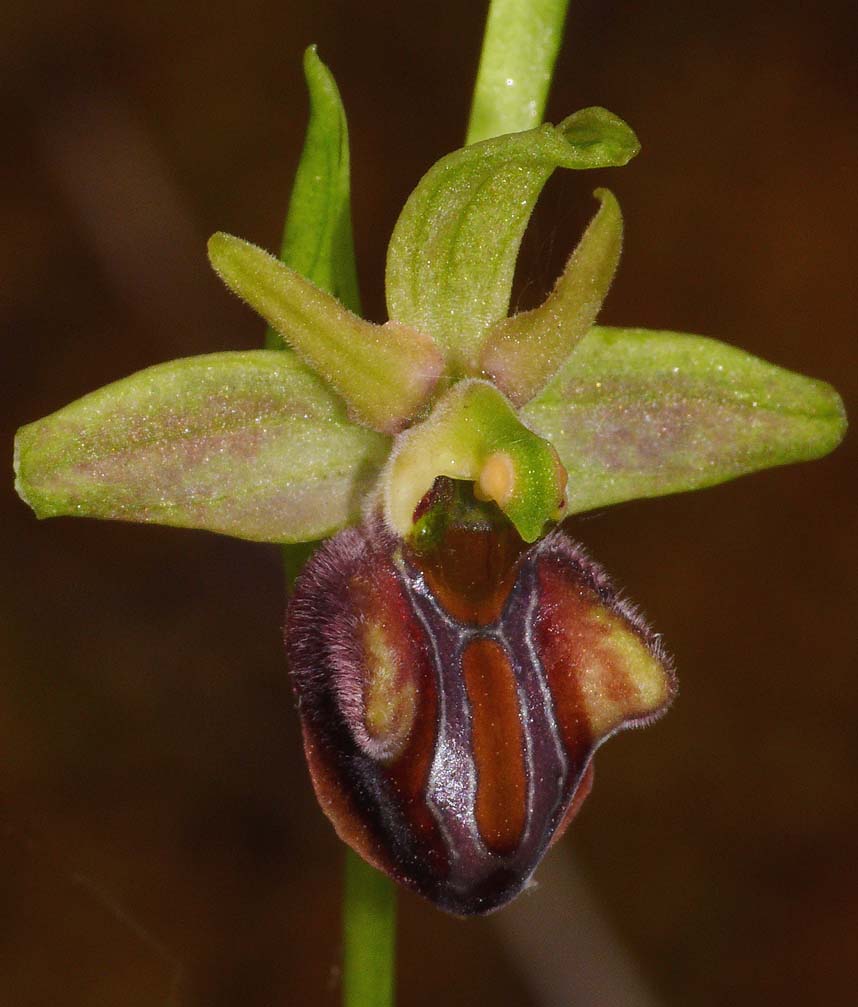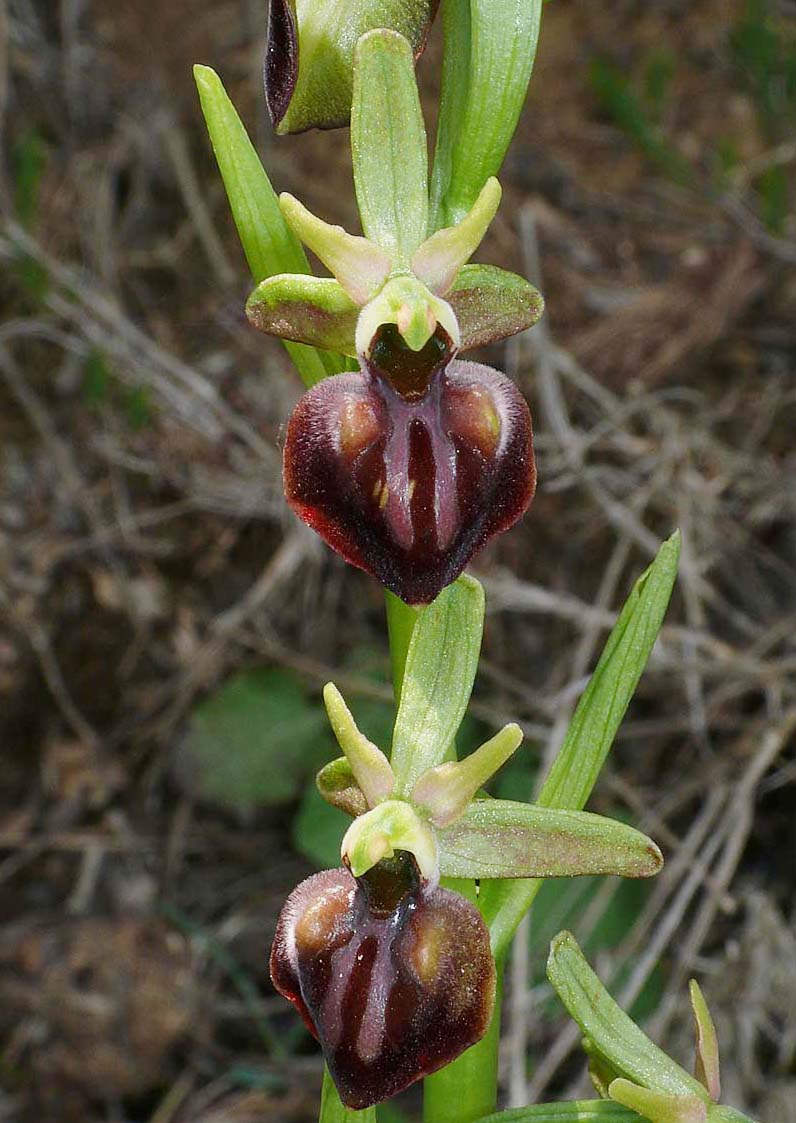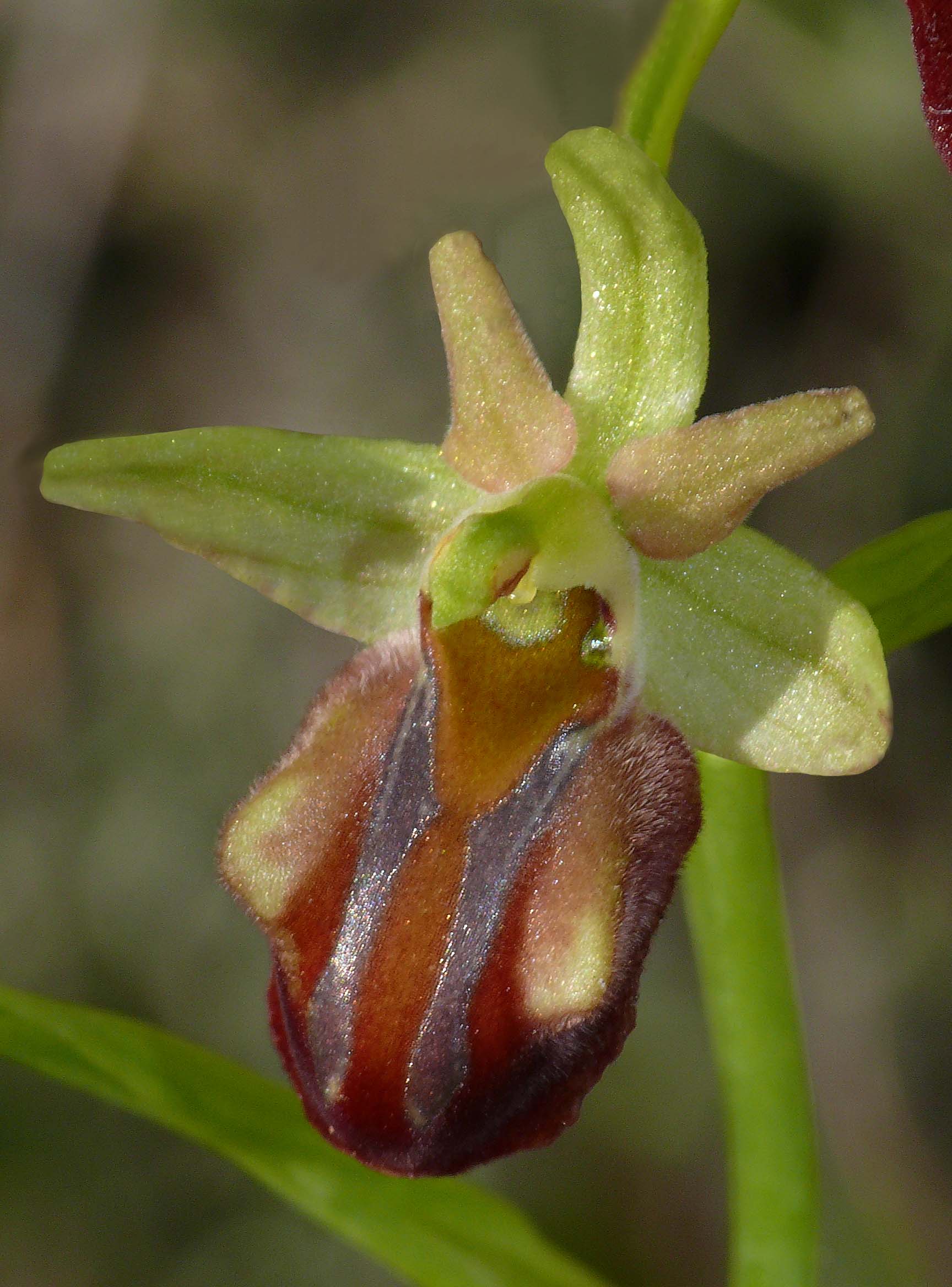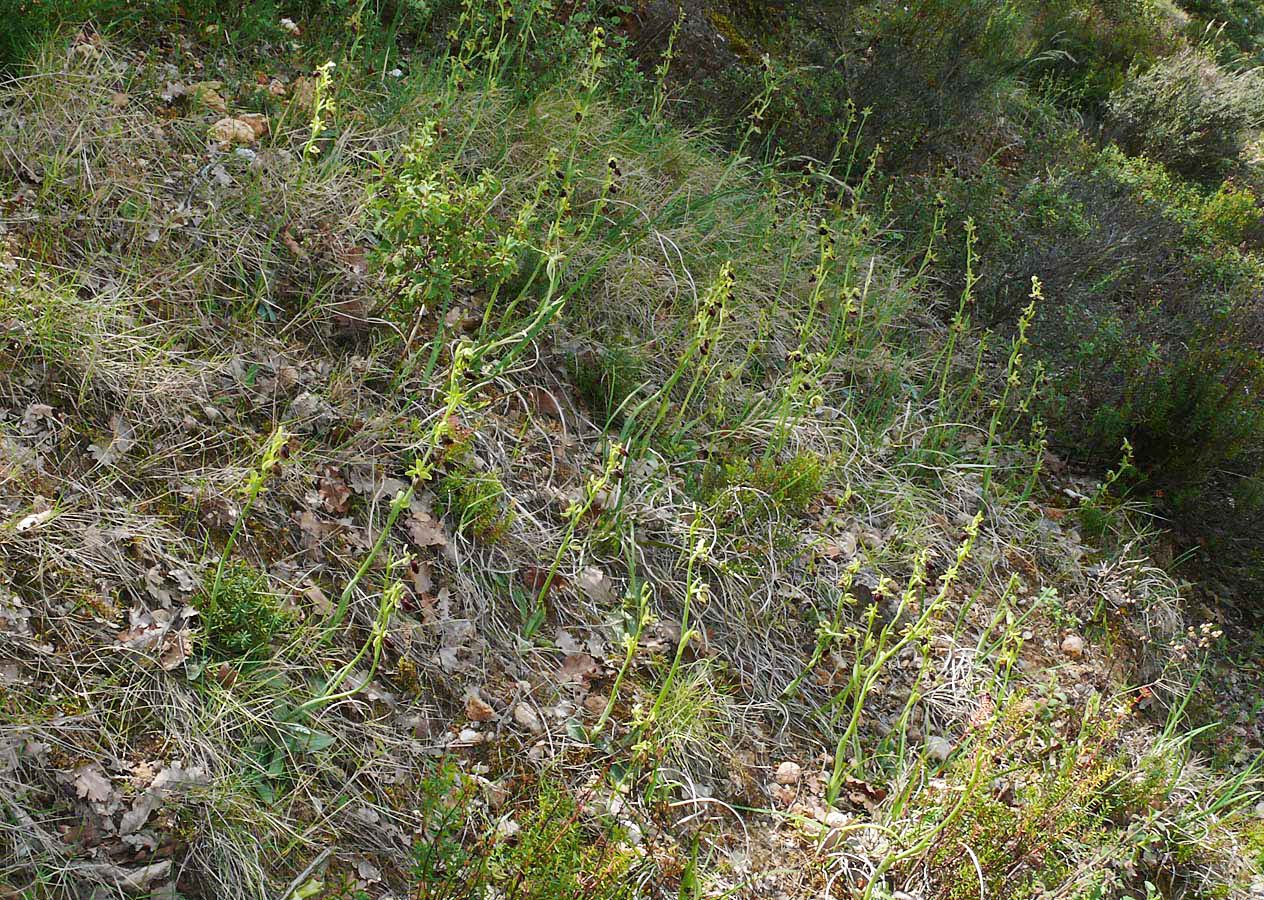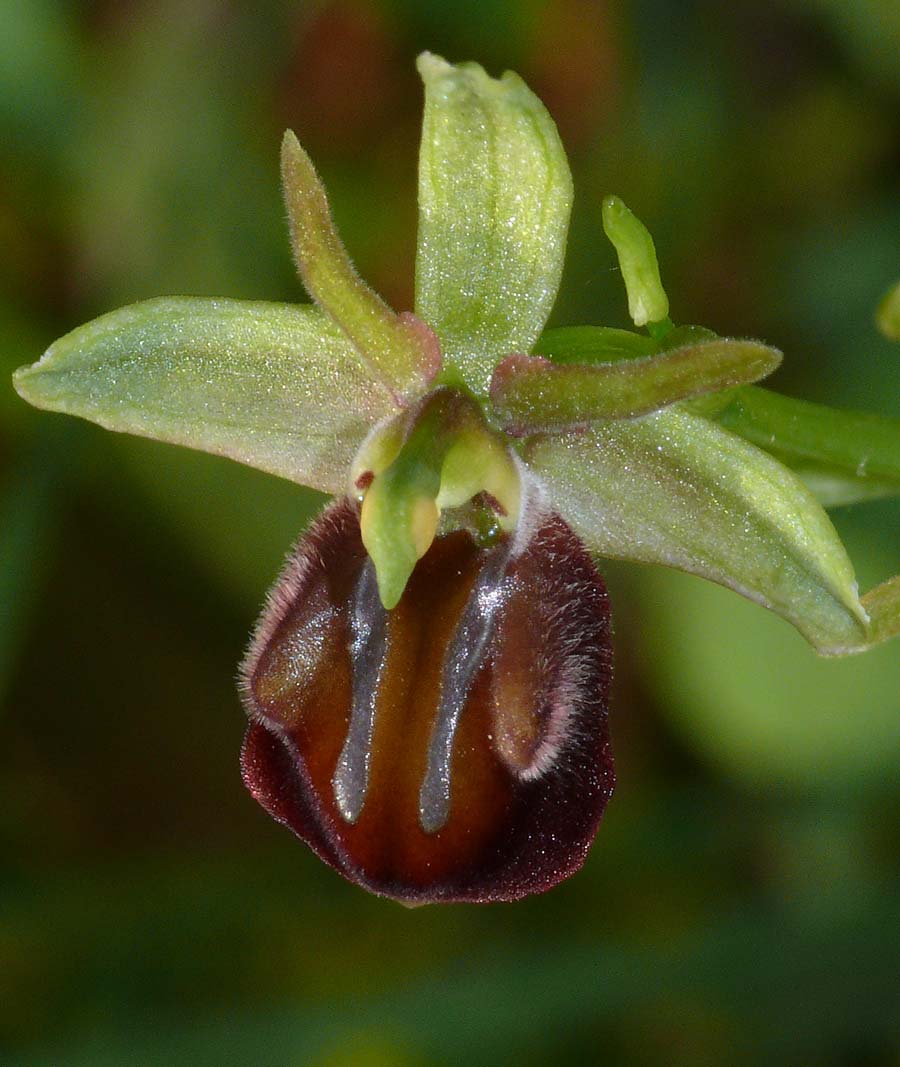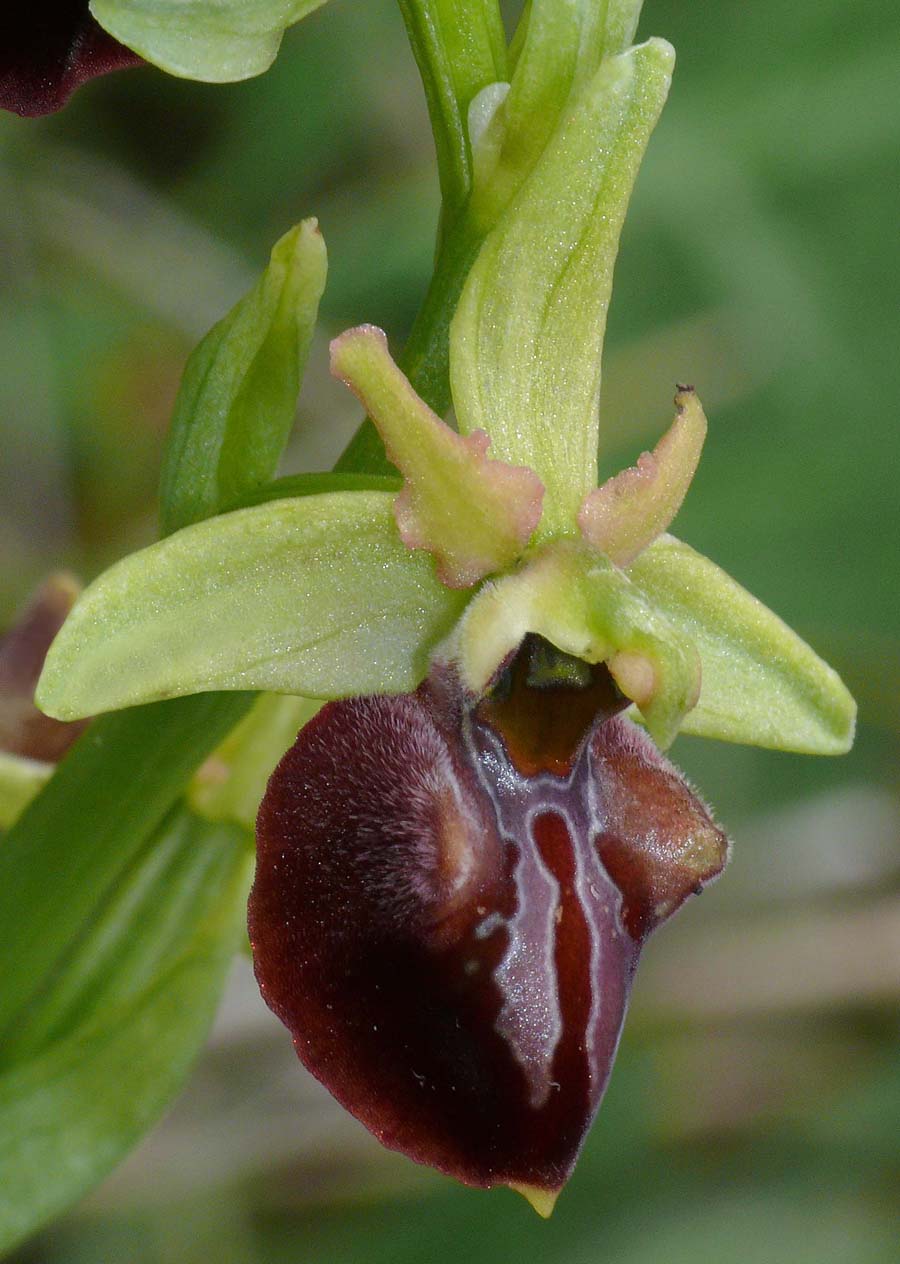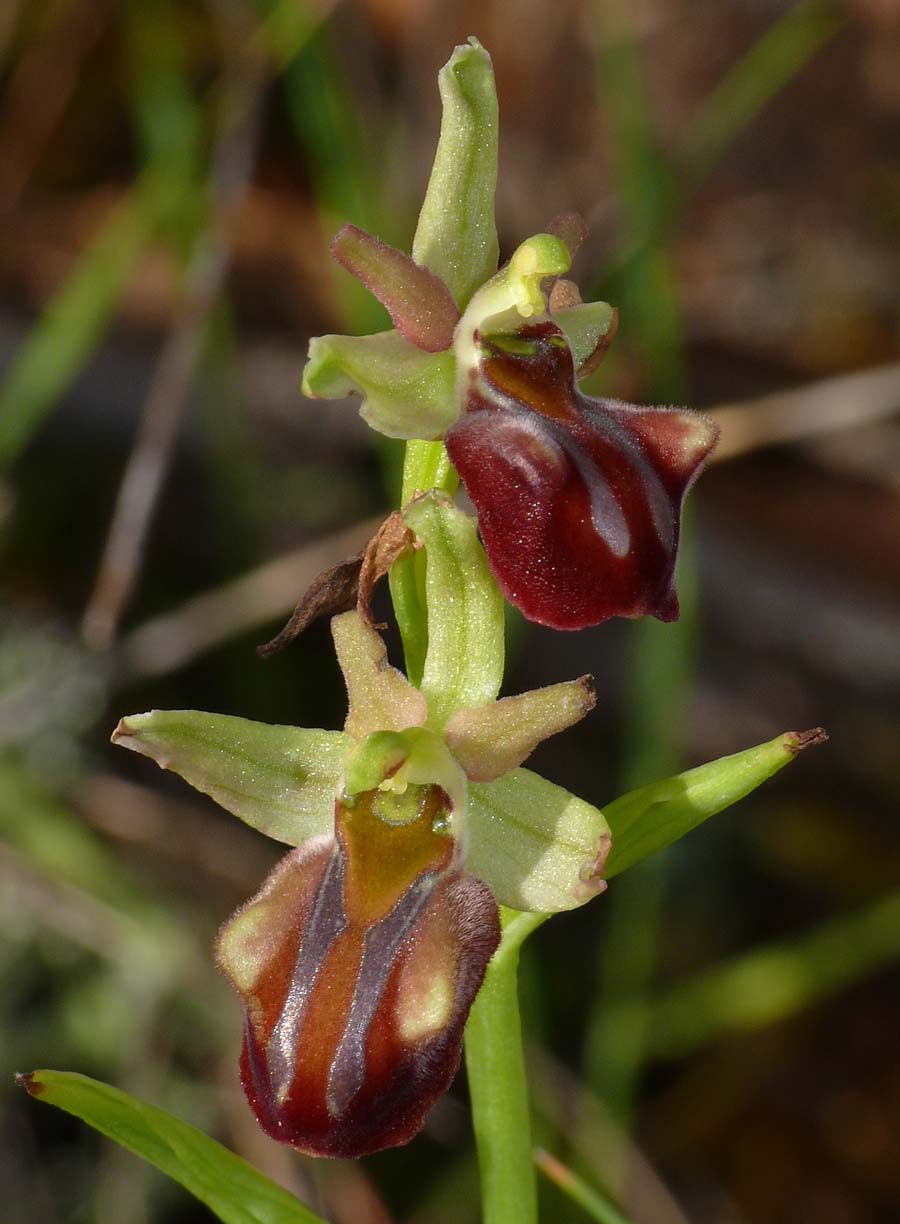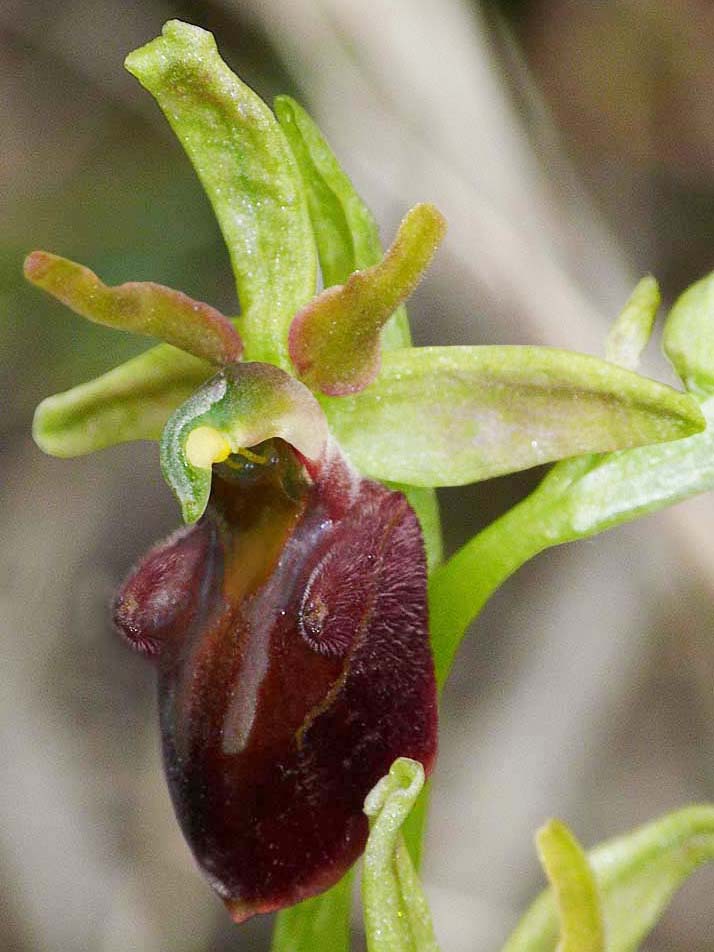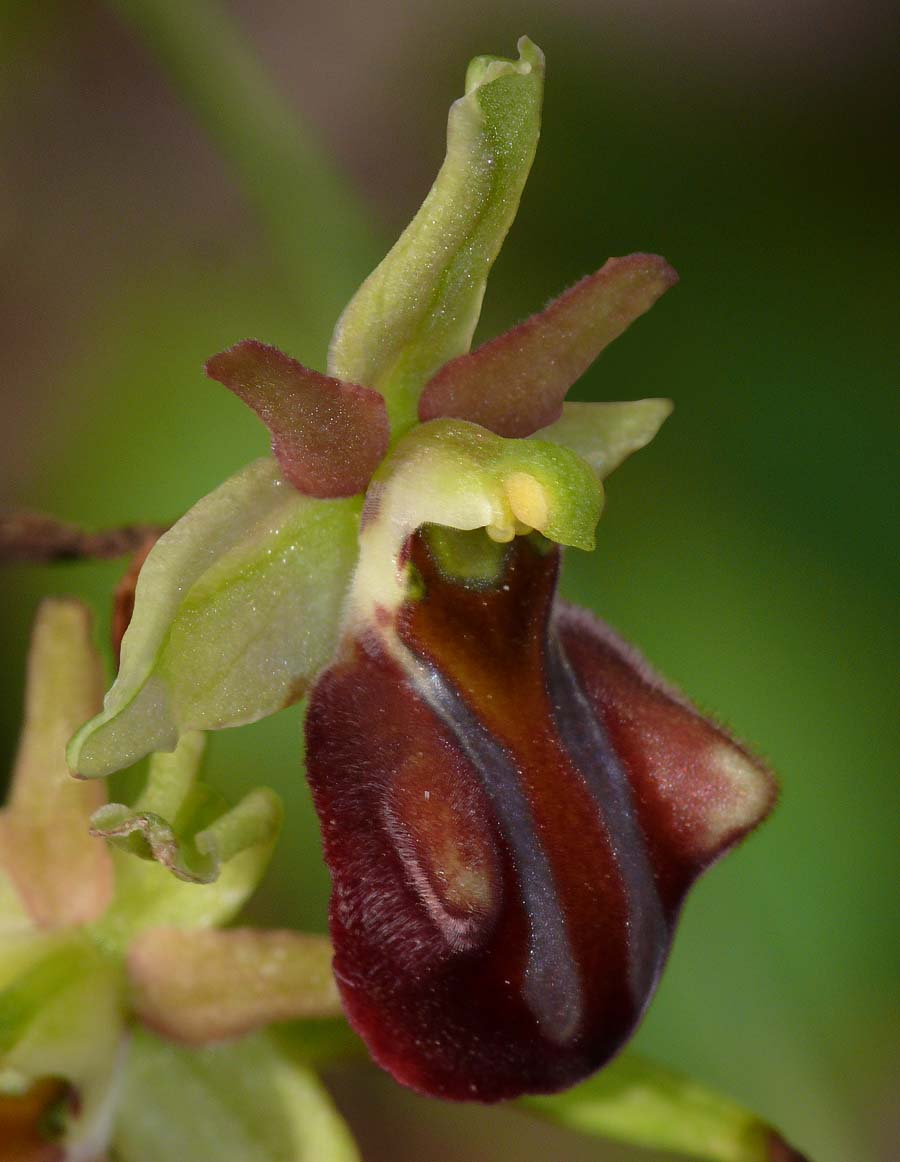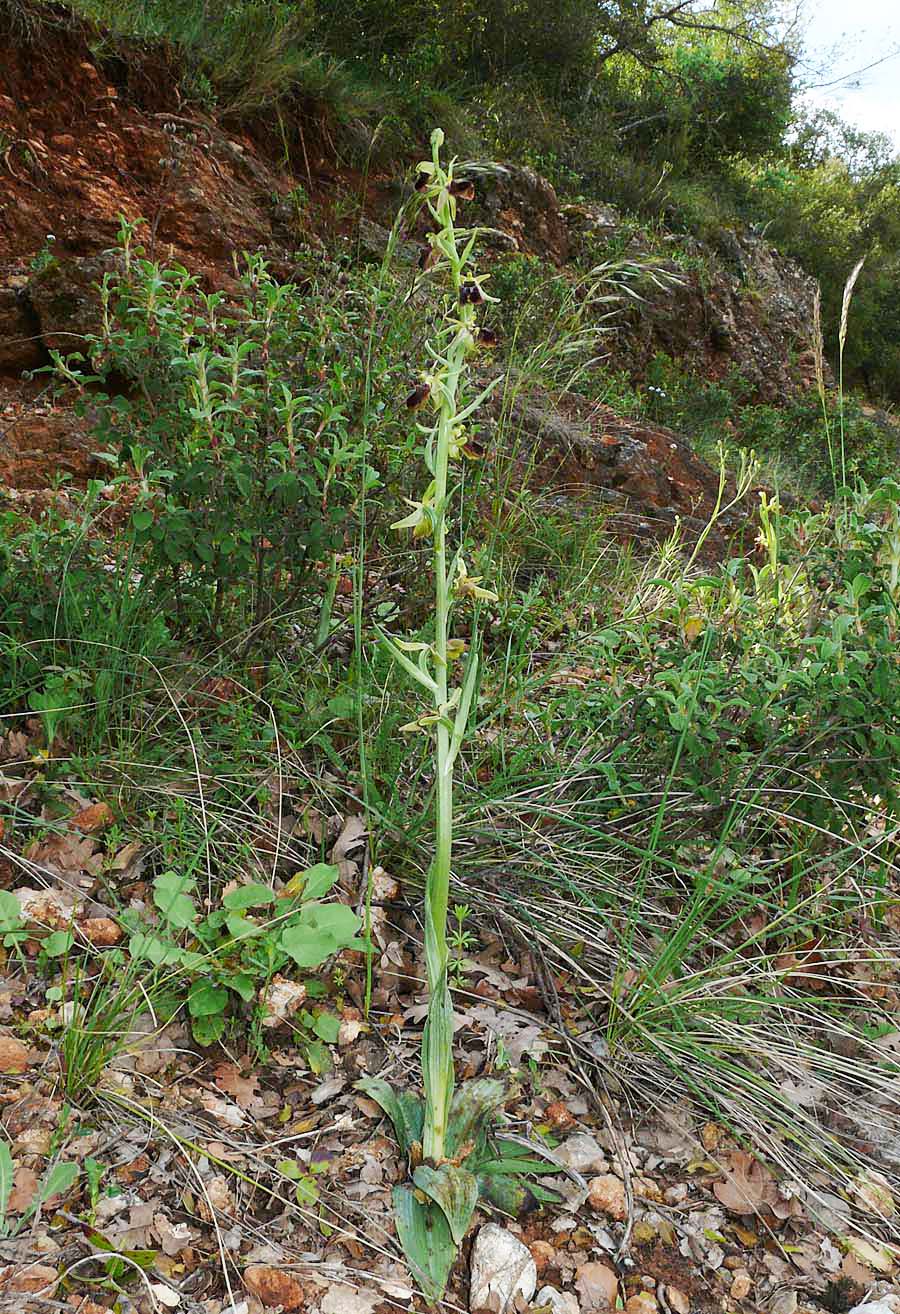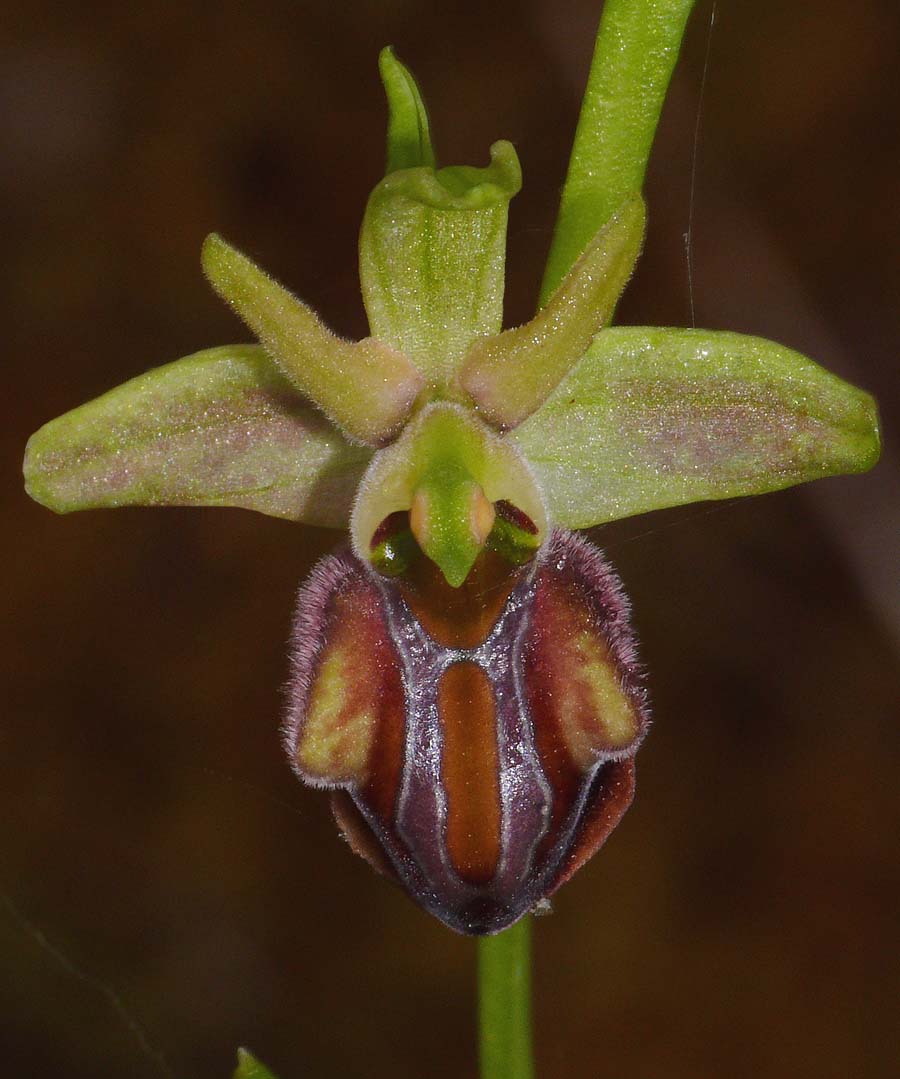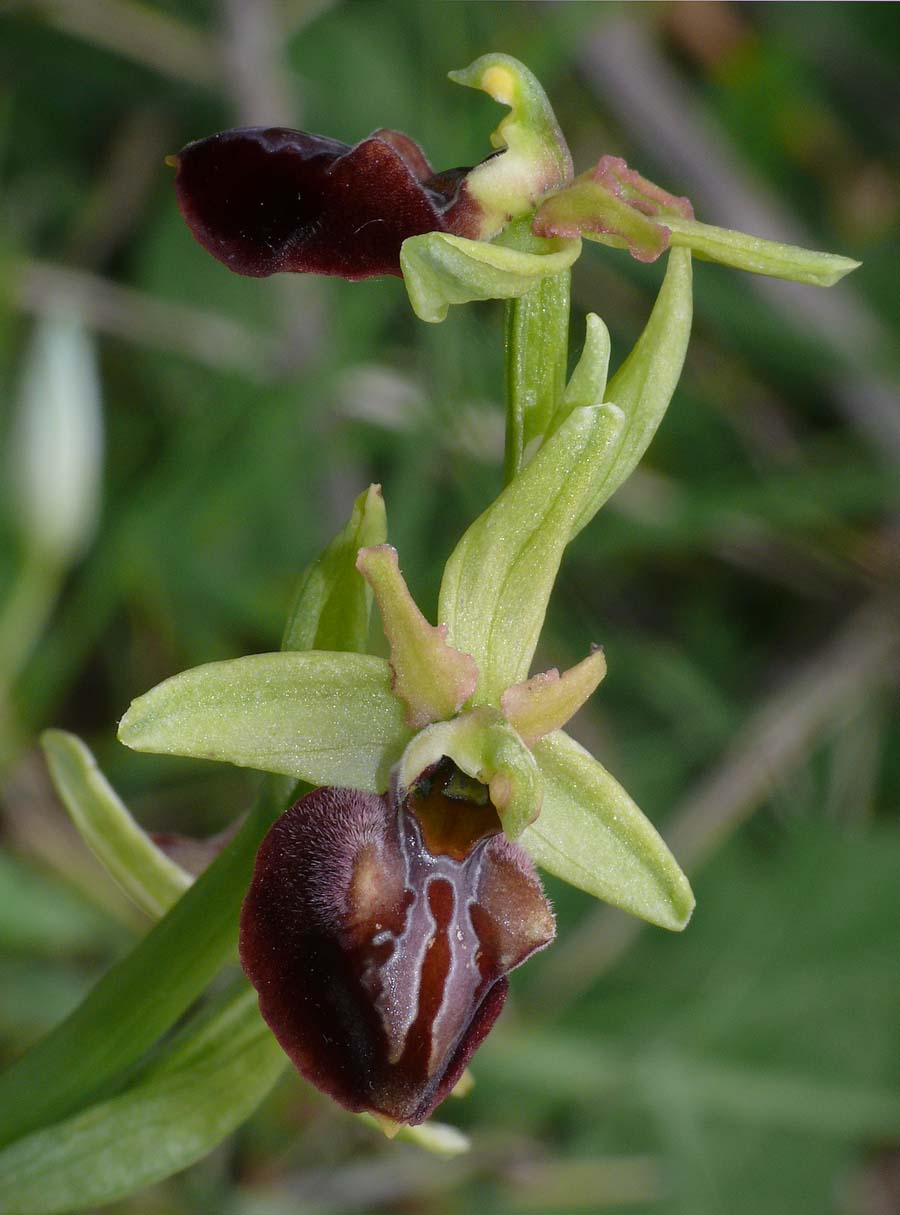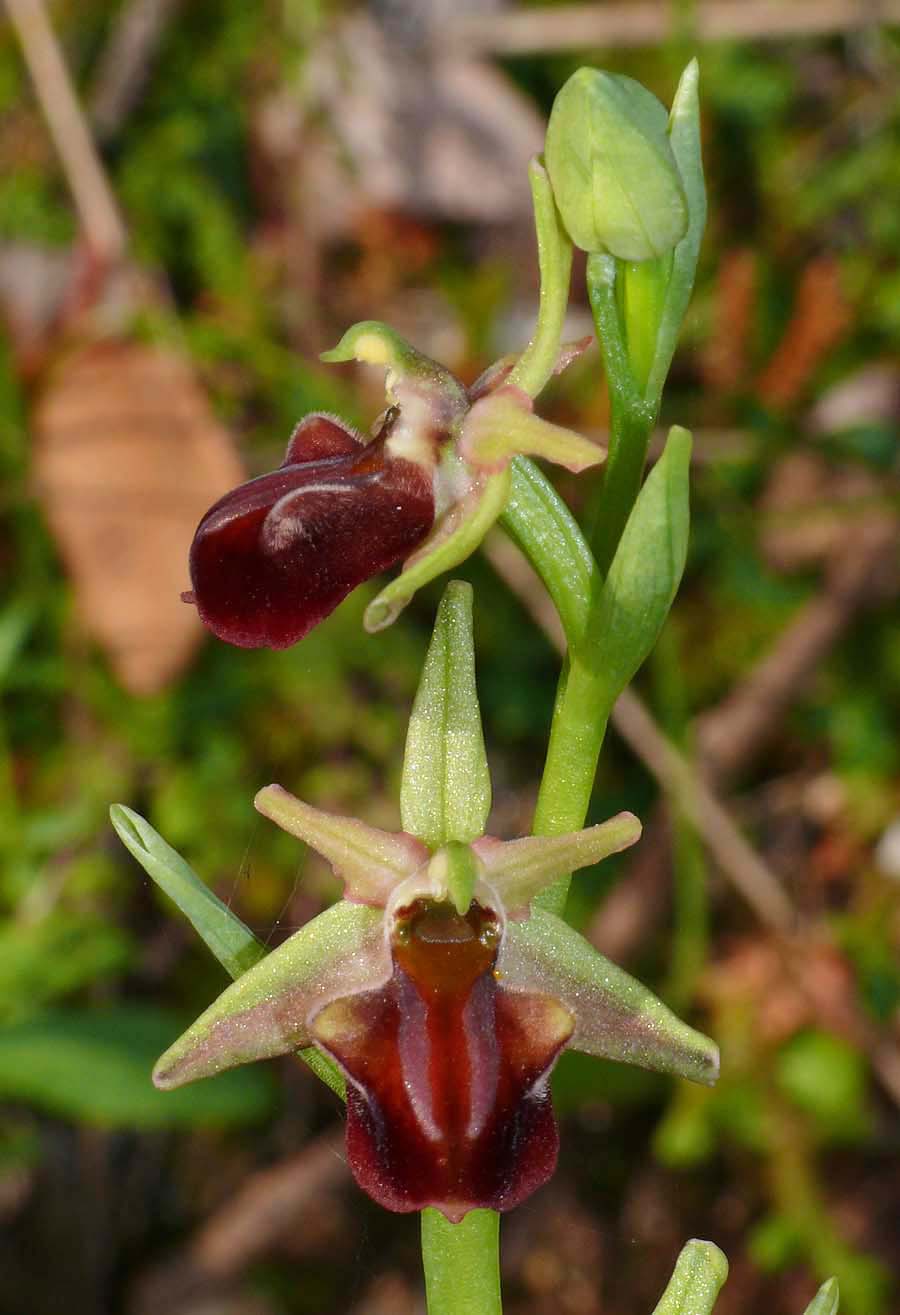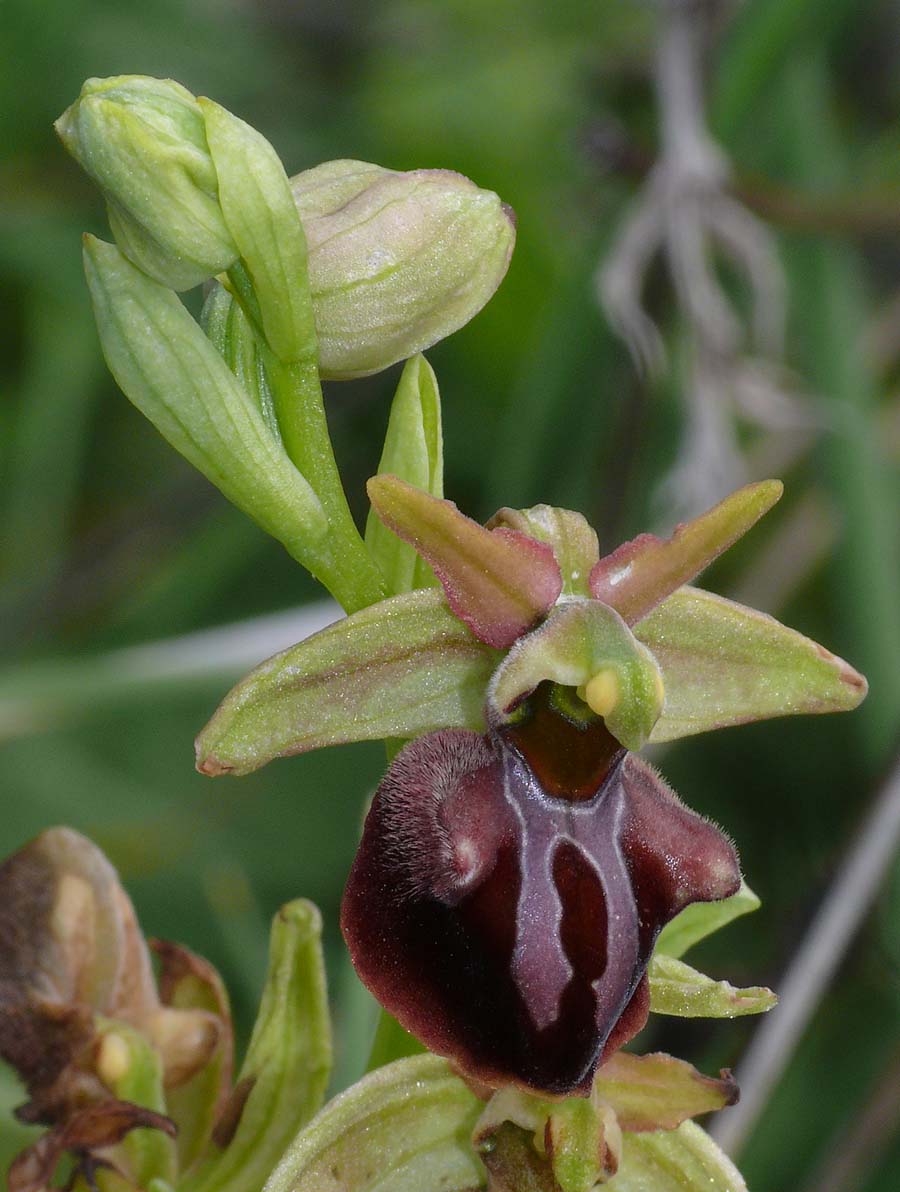O. grammica
was first described from Kastoria, Greece by Willing
and Willing in 1985 and is a member of the large and ever growing O. mammosa group
of Ophrys.
It was originally classified as a subspecies and later promoted to full
species status by Devillers and Devillers -Terschuren. The orchid is named after the location of its discovery, Mount Grammos.
The Ophrys of northern Greece and the O. mammosa group in particular, can be a difficult body of orchids to separate and being somewhat variable, O. grammica is no exception. O. herae was always a species that morphologically could resemble O. grammica and often phenology was the only satisfactory way to separate them. In the Ionian islands the situation was no less challenging and has become further complicated by Hirth's 1990s research concluding that the O. mammosa group of Corfu was not composed simply of O. grammica, O. herae and O. mammosa but comprised several more, as yet undescribed species. The study went on to formally recognize the early flowering O. janrenzii and assert that typical O. herae did not exist outside Samos. This leaves many unanswered questions, particularly whether or not these findings apply to mainland populations. Space does not however allow further expansion of the issues. The following pictures therefore represent images of what has until recently been regarded as O. grammica but without more comprehensive details of these proposed new taxons, must now be seen as tentative. It should perhaps be stressed that Hirth's study did not receive universal scientific acceptance.
In the description that follows and given that none of the pictures feature plants from Samos, any reference to O. herae must be taken as referring to plants formerly regarded as that taxon but which may now have been informally reclassified.
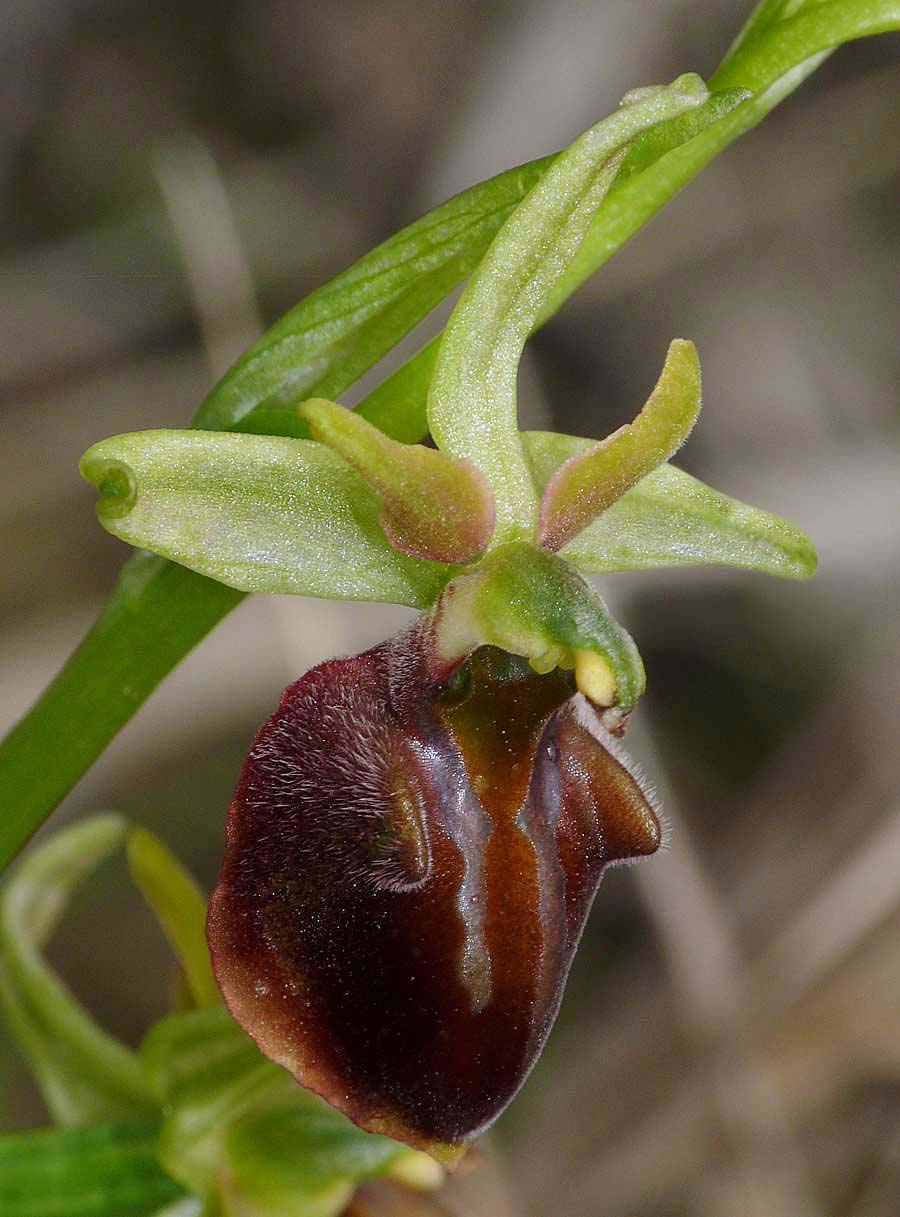
The specular pattern is usually a simple H and this is flanked by basal swellings which are always present and typically substantial. O. grammica is a small flower though the plant itself, although spindly, can be relatively tall, sometimes up to 40 cms with 10 individual flowers. It's a late flowerer from early April and can often still be found in early June. It shows a significant preference for neutral or mildly acidic soils, particularly on banks or hillsides that have suffered a degree of erosion.
O. grammica is a relatively rare orchid with a distribution primarily in western Greece and encompassing southern Macedonia, coastal Epirus and the Ionian islands. Future research may however see amendments to this current understanding of its range. The illustrations come from Epirus and the Ionian island of Cephalonia, dating from early April at a time when it was just producing its first flowers.
